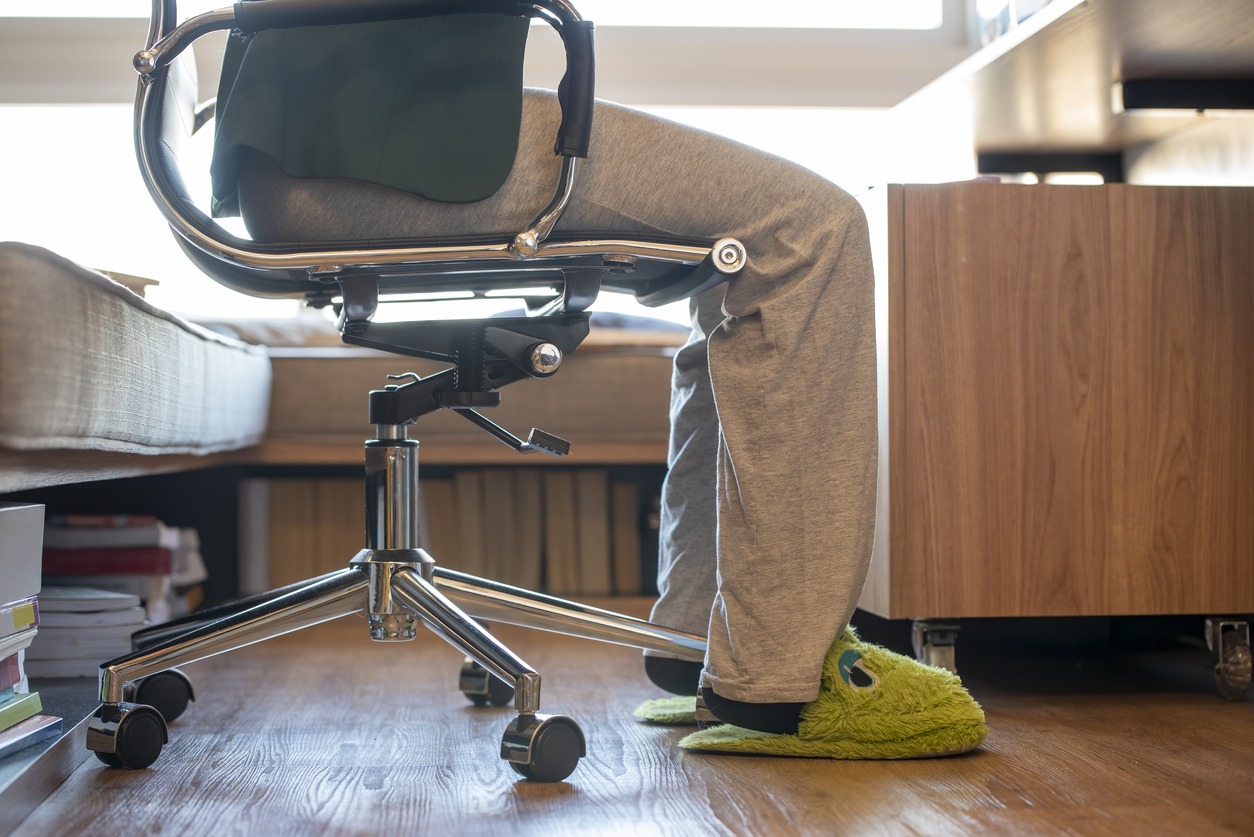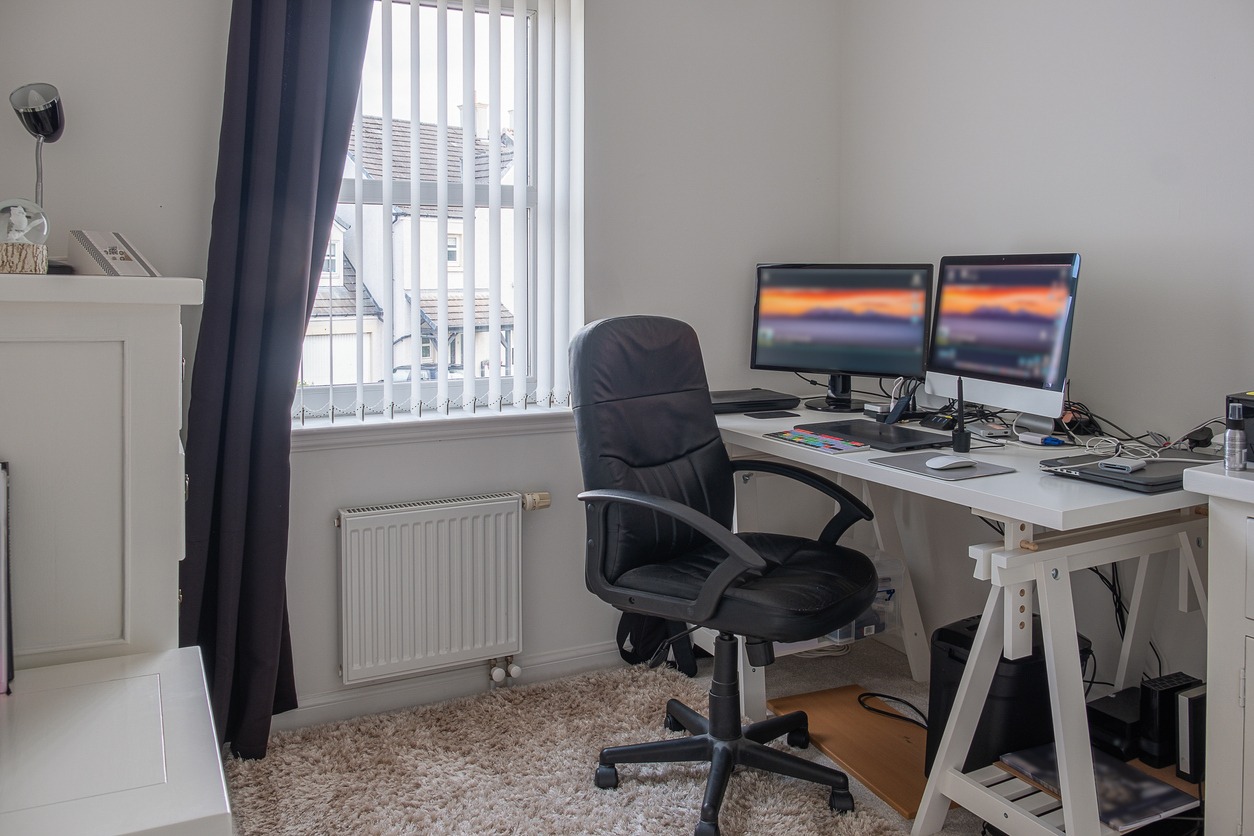The selection of the right office chair for a home setup transcends mere functionality; it’s a crucial decision impacting not just the aesthetics of your workspace but, more importantly, your comfort, health, and productivity. In today’s world, where remote work has become increasingly prevalent, creating an ergonomic and efficient home office environment cannot be overstated. A well-chosen home office chair can significantly enhance your work experience, offering the necessary support for long hours of work while also fitting seamlessly into the style and decor of your home.
This introductory guide aims to navigate the options available, highlighting the key considerations when choosing the perfect home office chair. Whether you’re dealing with back pain, upgrading your current chair for better posture support, or simply revitalizing your workspace, understanding the features, types, and benefits of various office chairs will set the foundation for making an informed decision that marries functionality with personal style.
What are the types of office chairs?
Home office chairs are available in various styles, each intended to meet distinct requirements, tastes, and workspace aesthetics. Understanding the available types is crucial for selecting a chair that enhances your home office and supports your health and productivity.
- Task Chairs: These are the quintessential office chairs known for their practicality and functionality. Typically featuring adjustable height and swivel capabilities, task chairs offer basic ergonomics without occupying too much space.
- Executive Chairs: These chairs are designed for comfort and style, often made from premium materials like leather. They usually have high backs, providing substantial support for long periods of sitting, making them ideal for senior professionals who spend a lot of time at their desks.
- Ergonomic Chairs: Ergonomic chairs are specifically made to assist proper posture and lower the risk of musculoskeletal problems. They may be adjusted to meet the user’s demands in several ways, including lumbar support, seat depth, and armrest height.
- Mesh Chairs: Known for their breathable backrests, mesh chairs are perfect for keeping you cool during long work sessions. They combine comfort with a modern look and often incorporate ergonomic features.
- Kneeling Chairs: These chairs encourage a more upright posture by tilting the hips forward, reducing the strain on the lower back. They’re an excellent option for those looking to improve their sitting posture.
- Balance Ball Chairs: An unconventional choice, these chairs aim to improve core strength and posture by requiring the user to balance on a stability ball. They’re fun and engaging but may not be suitable for all-day use.
Each type of home office chair offers unique benefits, from enhancing posture and comfort to adding a touch of style to your workspace. When selecting a chair, consider the time you spend at your desk, your physical needs, and the size of your home office to find the perfect match.
What are the best home office chairs?
Herman Miller Embody has an original and excellent design. The back stimulates blood circulation and oxygenation by reducing the strain on the body when sitting. In addition, the chair automatically adapts to the user’s back and movements.
Herman Miller is a very comfortable home Office chair. A good office chair costs between 200 to 500 dollars. The professional swivel chairs exceed the hundred-dollar mark, and there are hardly any limits to the top. These high-quality chairs for the home office combine individual ergonomic advantages.
You can also learn more about the best chair mat for a heavy person.
What is the most comfortable office chair?
The Herman Miller Embody chair is a pinnacle of ergonomic design, expertly engineered to support the body’s natural posture and respond to its movements. Recognized for its innovative backrest, which mimics the human spine, the Embody is designed to enhance health, improve focus, and provide unparalleled comfort during long hours of sitting. Its unique design encourages blood and oxygen flow, reducing the discomfort and fatigue associated with prolonged sitting. The chair’s seat depth and armrests are fully adjustable, ensuring a perfect fit for users of various sizes.
The Herman Miller Embody also boasts an array of adjustable features, including seat height and tilt, allowing for a highly personalized seating experience. Beyond its ergonomic benefits, the Embody showcases a sleek, modern aesthetic that complements any home office setup. Made with sustainable materials and built to last, it represents an investment in your home office, well-being, and productivity. The Embody’s blend of form, function, and sustainability sets it apart, making it a preferred choice for professionals seeking comfort and design.
How much should a good office chair cost?
When it comes to furnishing your home office, the budget and investment in a quality chair are crucial considerations that can significantly impact your overall comfort and productivity. Chairs range widely in price, reflecting differences in materials, design sophistication, and ergonomic features. Here’s how to navigate these considerations:
- Assess Your Needs: Determine how much time you spend sitting each day. If you’re at your desk for long hours, investing in a higher-end ergonomic chair can benefit your health and productivity in the long run.
- Quality Over Price: While it might be tempting to opt for a cheaper option, remember that a good office chair is an investment in your comfort, health, and work performance. Higher-quality chairs often come with better ergonomics, durability, and warranties, offering more value over time.
- Price Ranges: Home office chairs can range from under $100 for basic models to over $1,000 for high-end ergonomic designs. Mid-range options often provide a good balance of comfort, ergonomics, and affordability.
- Long-Term Investment: Consider the cost of the chair over its lifespan. A durable, high-quality chair that lasts for years can be more cost-effective than replacing a cheaper, less stable model every few years.
- Ergonomics and Adjustability: Prioritize features like adjustable height, lumbar support, and armrests, which can make a significant difference in comfort and support, even if they come at a higher price.
Investing in the right home office chair is about immediate comfort, preventing long-term physical strain, and increasing productivity. By carefully considering your needs and budget, you can select a chair that fits your workspace and supports your well-being over time.
Key Features to Consider
When selecting a home office chair, focusing on critical features is essential to ensure comfort and support during long work hours. These features are designed to improve posture, reduce the risk of pain, and enhance overall productivity. Here’s what to look for:
- Adjustable Height: Adjusting the seat height is crucial to ensure your feet can rest flat on the floor while keeping your arms at desk level, promoting proper posture.
- Lumbar Support: Adequate lower back support is vital to prevent back strain. An ergonomic chair with adjustable lumbar support can help maintain the spine’s natural curve.
- Seat Depth and Width: The seat should have enough depth and width to support any user comfortably. Ideally, the seat should have enough depth to allow your back to rest against the backrest with a few inches of space from the seat to your knees.
- Armrests: Adjustable armrests can help reduce shoulder and neck tension. They should allow your arms to rest comfortably and your shoulders to remain relaxed.
- Swivel and Mobility: A chair that swivels and has casters allows for easy movement around your workspace without strain. This is especially important in a home office setup where you might need to reach different areas without getting up.
- Material: The chair’s material should be breathable to keep you cool and comfortable over long periods. Mesh backs are famous for their breathability, while leather and fabric offer different comfort levels and styles.
Considering these key features when choosing your home office chair can significantly impact your comfort, health, and efficiency. Investing in a chair that meets these criteria will pay off in the long run by enhancing your work experience and well-being.
Try Before You Buy
If possible, test the chair in a store before making a purchase. This lets you feel the chair’s comfort, adjustability, and support firsthand. If buying online, read reviews and carefully check the return policy if the chair does not meet your expectations once you try it out at home.
Watch out for the Warranty
A good warranty can signal the manufacturer’s confidence in their product. Look for warranties that cover at least a few years of extensive use.
Health Considerations
The right chair can aid in preventing neck and shoulder tension by providing adjustable armrests and a headrest that aligns with your natural posture. Investing in a chair that addresses these health considerations can improve comfort, reduce injury risk, and enhance overall well-being, making it a critical factor for anyone working from a home office.
FAQs
Addressing Frequently Asked Questions (FAQs) about home office chairs can provide valuable insights and clarity for those selecting the perfect seating solution for their workspace. Here are some common queries and their answers:
- What makes an office chair ergonomic?
- An ergonomic chair is designed to support your body comfortably for long periods of sitting. Key features include adjustable seat height, lumbar support, adjustable armrests, and the ability to tilt and swivel, all aimed at promoting good posture and minimizing strain.
- How often should I replace my office chair?
- The lifespan of an office chair depends on its quality, material, and how well it’s maintained. A high-quality office chair can last between 7 to 10 years. However, it might be time for an upgrade if you notice signs of wear or decreased comfort.
- Can the right office chair improve productivity?
- Yes, a comfortable and supportive chair can reduce discomfort and distraction, enhancing concentration and efficiency. Ergonomic features specifically can help maintain energy levels and focus throughout the day.
- What’s the best way to clean and maintain my office chair?
- Cleaning instructions vary based on the chair’s material. Generally, vacuuming the upholstery and wiping down hard surfaces with a damp cloth can keep your chair clean. For specific materials like leather, use appropriate conditioners and cleaners.
- Are expensive chairs worth the investment?
- While higher-priced chairs often offer superior ergonomics, materials, and durability, the best chair for you is one that fits your budget while meeting your physical and professional needs. Sometimes, mid-range chairs provide an excellent balance of cost and comfort.
By considering these FAQs, individuals can make more informed decisions when selecting a home office chair, ensuring they choose a chair that fits their budget and style and supports their health and productivity in the long term. So, whether you are doing a sedentary job or getting up in between and changing jobs makes a difference.
Conclusion
In conclusion, selecting the right home office chair is a decision that bears significant weight on your daily comfort, health, and productivity. Finding the perfect chair involves understanding the various types available, recognizing the importance of ergonomic design, and considering your needs and workspace requirements. Key features such as adjustable height, lumbar support, seat depth, and material play a crucial role in ensuring that your chair supports your body correctly and enhances your overall work experience.
While budget and aesthetics are important factors, they should complement your home office setup’s ergonomic and functional needs. Remember, investing in a high-quality office chair is investing in your well-being and efficiency in your professional life. By carefully considering the insights and guidelines in this discussion, you can make an informed choice that aligns with your work habits, health needs, and personal style, ensuring a comfortable and productive home office environment.


